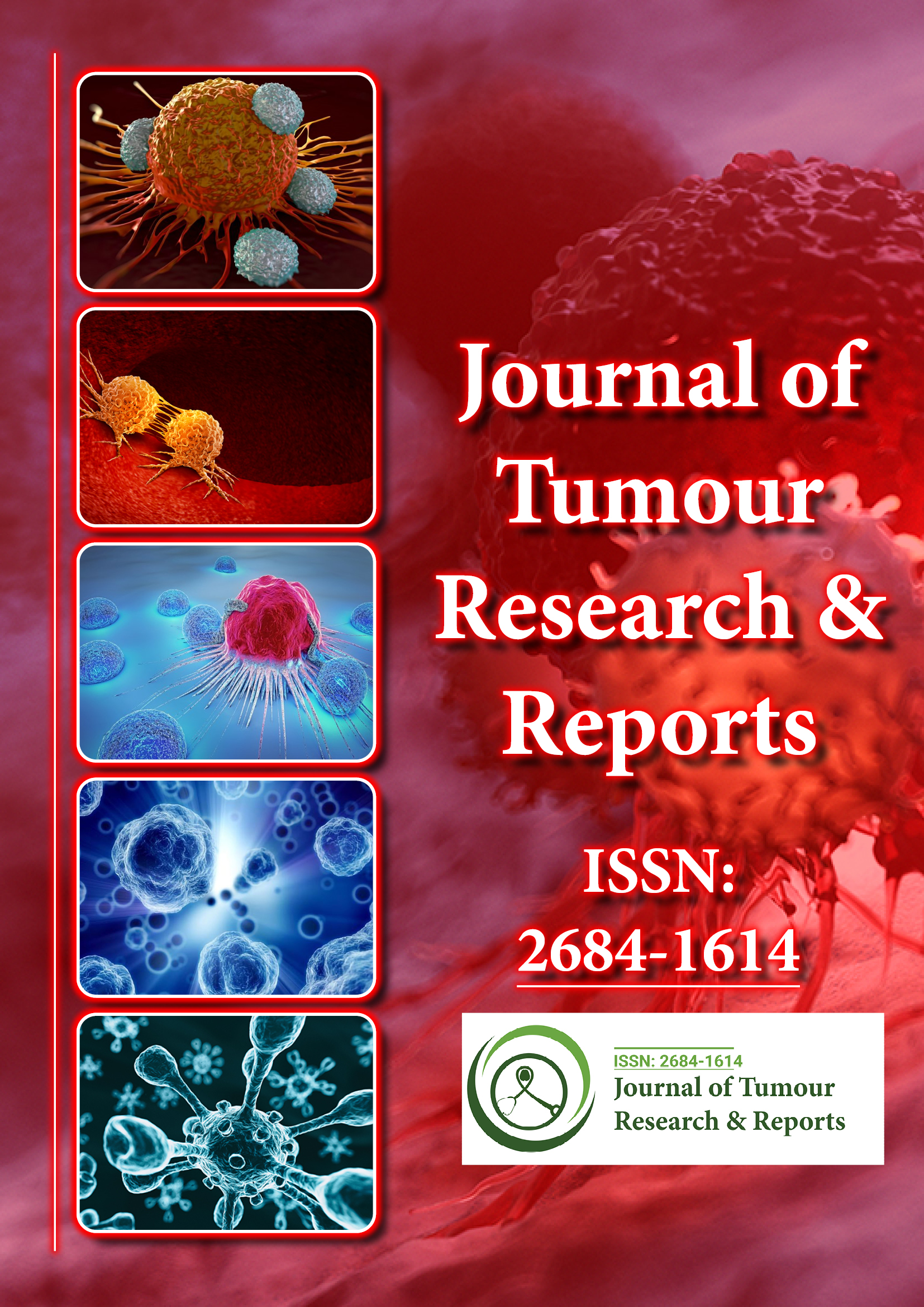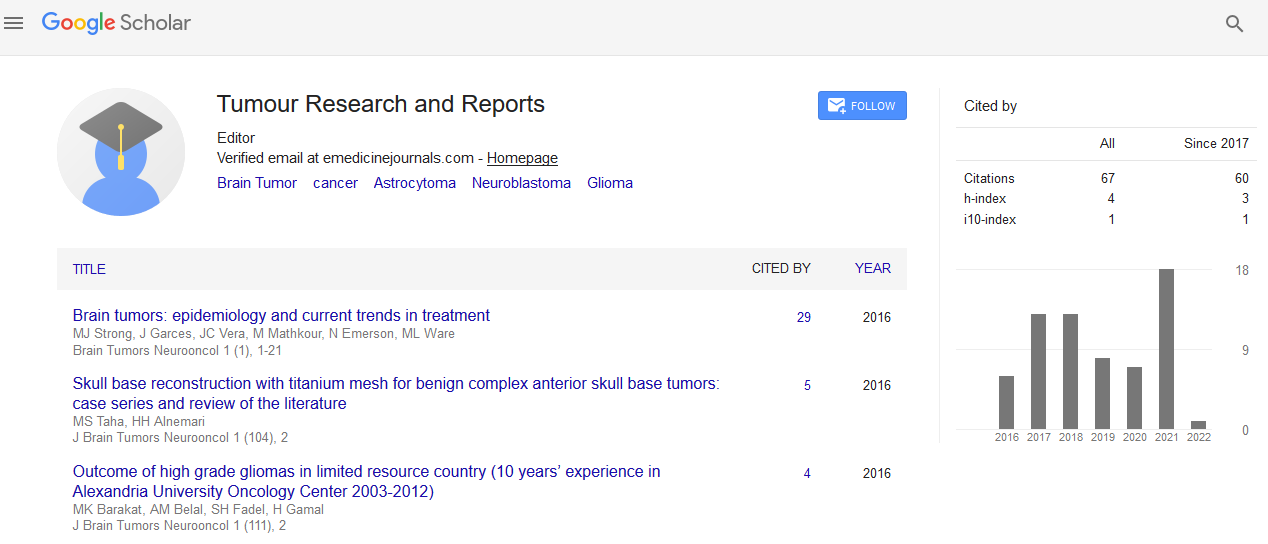Indexed In
- RefSeek
- Hamdard University
- EBSCO A-Z
- Google Scholar
Useful Links
Share This Page
Journal Flyer

Open Access Journals
- Agri and Aquaculture
- Biochemistry
- Bioinformatics & Systems Biology
- Business & Management
- Chemistry
- Clinical Sciences
- Engineering
- Food & Nutrition
- General Science
- Genetics & Molecular Biology
- Immunology & Microbiology
- Medical Sciences
- Neuroscience & Psychology
- Nursing & Health Care
- Pharmaceutical Sciences
Perspective - (2025) Volume 10, Issue 2
Tumour Metabolism: Rewiring Energy Pathways for Survival and Growth
Natalia Petrova*Received: 30-May-2025, Manuscript No. JTRR-25-29819; Editor assigned: 02-Jun-2025, Pre QC No. JTRR-25-29819 (PQ); Reviewed: 16-Jun-2025, QC No. JTRR-25-29819; Revised: 23-Jun-2025, Manuscript No. JTRR-25-29819 (R); Published: 30-Jun-2025, DOI: 10.35248/2684-1614.25.10.258
Description
Metabolism, the set of chemical reactions that sustain life, is fundamentally altered in cancer cells. More than a century ago, Otto Warburg observed that cancer cells preferentially use glycolysis for energy production even in the presence of oxygen, a phenomenon now known as the Warburg effect. This metabolic reprogramming allows tumours to generate not only energy but also biosynthetic precursors necessary for rapid proliferation. Over the years, our understanding of tumour metabolism has expanded beyond glycolysis to include alterations in mitochondrial function, amino acid metabolism, lipid synthesis, and interactions with the tumour microenvironment. These changes reflect the adaptability of cancer cells and their ability to exploit metabolic pathways for survival and growth.
The reliance on glycolysis provides several advantages to tumour cells. Although less efficient than oxidative phosphorylation in terms of ATP production, glycolysis is faster and produces intermediates that feed into biosynthetic pathways. For example, glucose-derived carbon can be used to synthesize nucleotides, amino acids, and lipids, supporting the anabolic needs of rapidly dividing cells. The acidification of the extracellular environment through lactate secretion also promotes invasion, suppresses immune responses, and contributes to therapy resistance. Thus, glycolysis serves both metabolic and microenvironmental functions that enhance tumour fitness.
Mitochondria, long regarded as the powerhouse of the cell, play a complex role in cancer metabolism. While some tumours reduce reliance on oxidative phosphorylation, others maintain or even enhance mitochondrial function. Mitochondria contribute not only to ATP production but also to the generation of reactive oxygen species, biosynthetic precursors, and apoptotic signaling. Mutations in mitochondrial DNA or alterations in enzymes of the tricarboxylic acid cycle can drive oncogenesis by disrupting metabolic homeostasis. For example, mutations in isocitrate dehydrogenase produce the oncometabolite 2-hydroxyglutarate, which interferes with epigenetic regulation and promotes tumour development.
Amino acid metabolism is another critical aspect of tumour biology. Cancer cells often exhibit increased uptake and utilization of glutamine, which serves as a carbon and nitrogen source for biosynthesis and energy production. Glutamine metabolism supports nucleotide synthesis, replenishes tricarboxylic acid cycle intermediates, and helps maintain redox balance through production of glutathione. Deprivation of glutamine can trigger apoptosis in tumour cells, highlighting its importance. Other amino acids, such as serine and glycine, also contribute to one-carbon metabolism, which is essential for DNA and RNA synthesis. Targeting these pathways has emerged as a promising therapeutic strategy.
Lipid metabolism is similarly reprogrammed in cancer. Tumour cells increase de novo lipid synthesis to provide membranes for dividing cells and signaling molecules that regulate growth. Fatty acid oxidation also contributes to energy production and survival under nutrient-deprived conditions. Alterations in lipid metabolism not only support proliferation but also influence interactions with the immune system and metastatic potential. For instance, accumulation of specific lipid species can modulate immune cell activity within the tumour microenvironment, shaping the overall course of disease.
The tumour microenvironment exerts a profound influence on cancer metabolism. Hypoxia, nutrient deprivation, and interactions with stromal cells drive metabolic adaptations that enable tumour survival. Under hypoxic conditions, activation of hypoxia-inducible factors promotes glycolysis, angiogenesis, and metabolic flexibility. Cancer-associated fibroblasts can provide nutrients such as lactate or amino acids to support tumour metabolism, while immune cells compete with cancer cells for metabolic resources. This dynamic interplay creates a complex metabolic ecosystem that sustains tumour growth and impacts therapeutic response.
Therapeutically targeting tumour metabolism presents both opportunities and challenges. Inhibitors of glycolysis, glutaminase, or lipid synthesis have shown promise in preclinical studies, but translating these findings into clinical success is difficult due to the redundancy and plasticity of metabolic pathways. Tumour cells can often adapt by rerouting metabolism through alternative pathways, reducing the effectiveness of single-target approaches. Combination therapies that simultaneously disrupt multiple metabolic nodes may offer greater efficacy. Furthermore, because normal proliferating cells also rely on similar pathways, achieving selectivity for cancer cells remains a key challenge.
Citation: Petrova N (2025). Tumour Metabolism: Rewiring Energy Pathways for Survival and Growth. J Tum Res Reports. 10:258.
Copyright: © 2025 Petrova N. This is an open-access article distributed under the terms of the Creative Commons Attribution License, which permits unrestricted use, distribution, and reproduction in any medium, provided the original author and source are credited.

